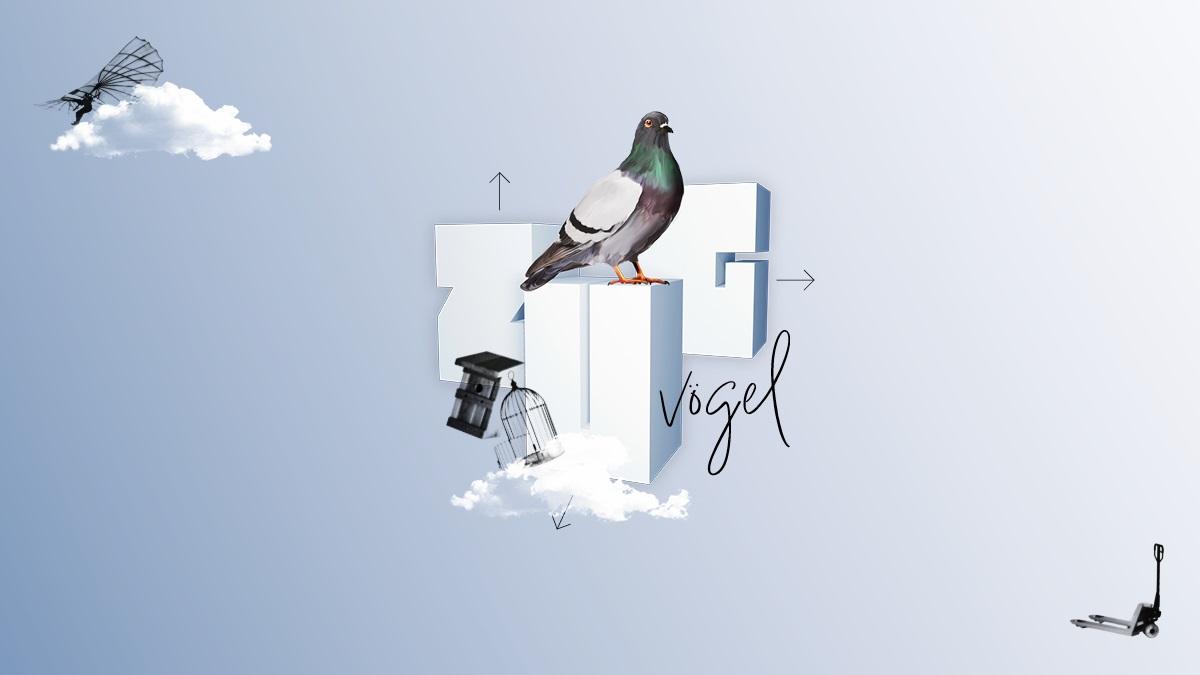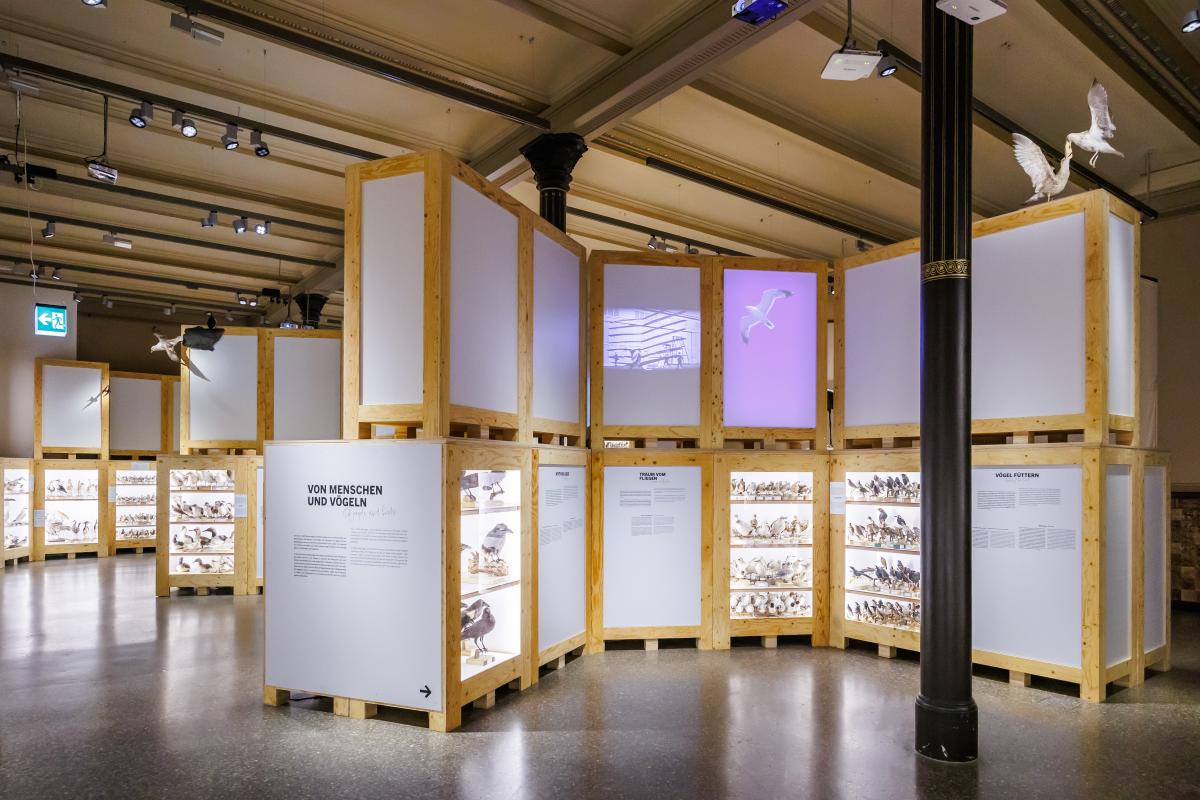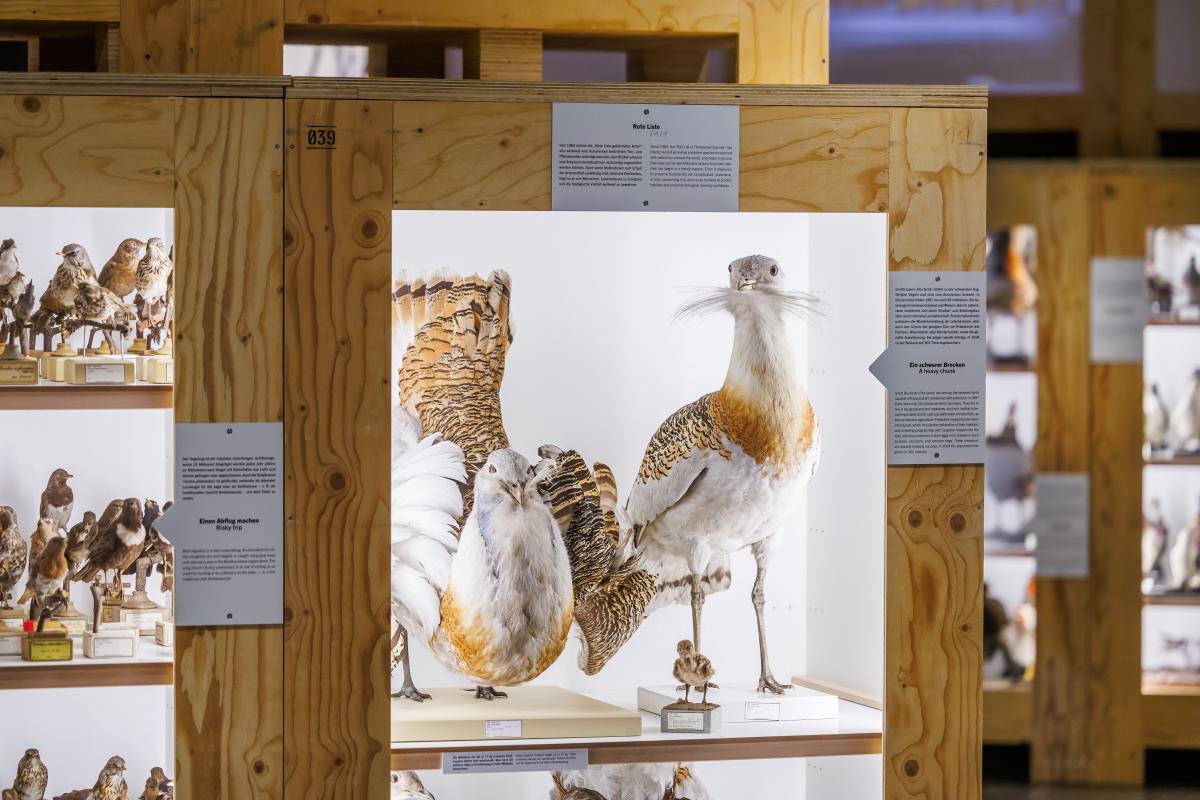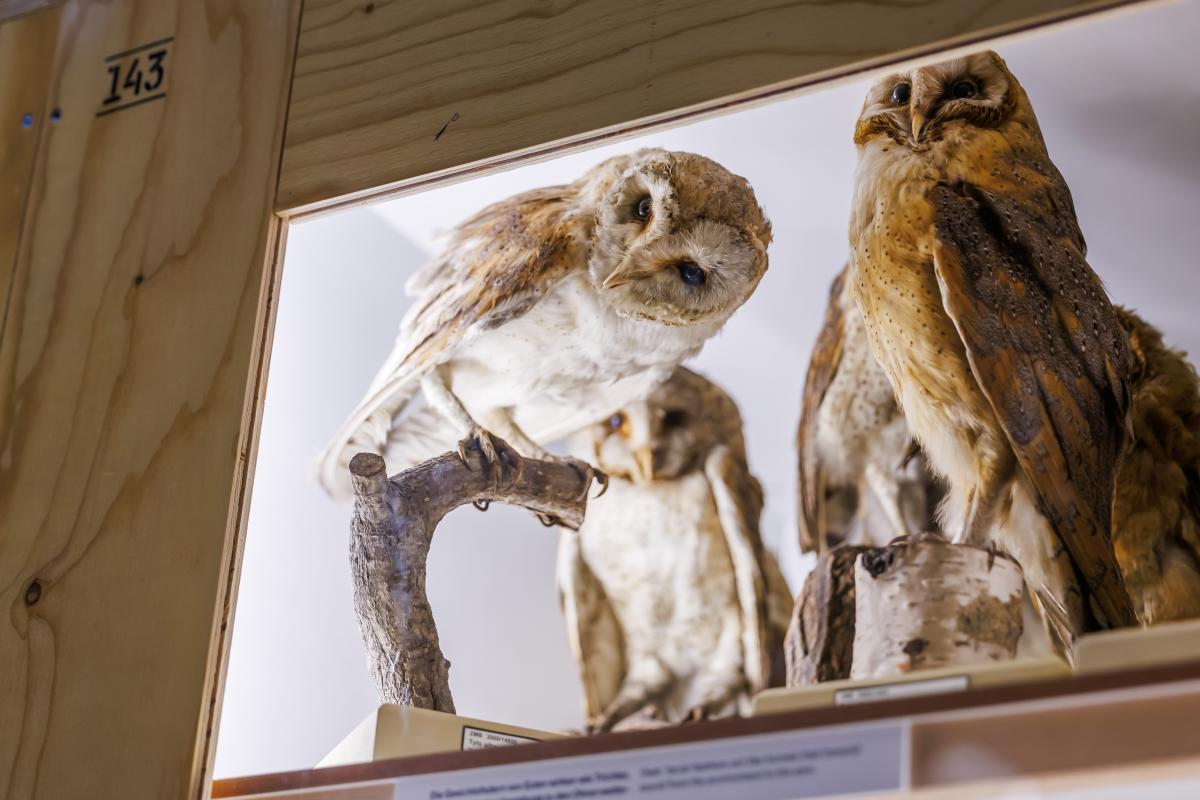Special exhibition from 11 June 2024 to the end of June 2027
Our bird collection has to be partially relocated due to renovation. We have taken this as an opportunity for a one-off special exhibition focusing on the historical bird specimens and input from our visitors.
The collection room with the historical bird specimens is currently being renovated as part of the Future Plan. For the approximately 11,500 historical mounted specimens, this means: please move out temporarily.
All specimens were cleaned, photographed and packed into transport boxes. Instead of keeping the boxes behind closed doors, this move offered a rare opportunity to make this part of the collection accessible to the public for the first time via the ZUGvögel project. But that's not all. We spoke to over 350 people to help shape the themes of ZUGvögel. Their questions, perspectives and associations form the basis for an exhibition that is as colourful and diverse as the world of birds itself.
History of the collection
Most of the birds in the exhibition are more than 100 years old, some even older than the museum itself. After its foundation in the 19th century, the collection grew rapidly through donations and purchases, but also benefited from colonial trade and expedition routes. In addition to the bird fauna of Brandenburg, it includes many objects from former European colonies.
Travel with us back to the origins of the collection and find out how objects arrived at the museum, why some of our collection pieces look so tattered and what traces of history can be read from them.
Bird species and characteristics
There are around 11,000 different bird species worldwide and six times as many birds as people on the planet. They can be found in almost all areas and have amazing characteristics.
In the exhibition, visitors can find out why the black kite in Australia is also called the "Fire Falcon" or why some hummingbirds plunge from heights of up to 40 meters.
Historical contexts
Collection objects not only tell stories about biological connections, but also about the political conditions under which they were collected, preserved and researched. They are evidence of the complex interactions between people and nature, power and knowledge, and politics and science.
Visitors can explore the colonial context of the collection items and, for example, read about the ways in which colonial and racist ideas are reflected in the collection.
Preparation and conservation
Everything that lives decomposes after death. For a natural history collection, this decay process must first be halted, after which animal or plant bodies are stored under certain conditions. Different objects have their own specific requirements.
Visitors can find out here which of our collection items wear make-up and why some of the birds have grown again after their death, what makes our “mounted specimens” stable and in which discipline the Museum für Naturkunde is world champion.
Environmental protection and biodiversity
Climate change, a lack of food due to the death of insects, loss of habitats, plastic pollution in the oceans, the spread of diseases or illegal hunting. These combined factors have contributed to an alarming rate of species loss today.At the same time, there are also positive stories that testify to the success of species protection measures.
Discover why the well-known German children's song "All the birds are already here" ("Alle Vögel sind schon da") needs an update, how capsized rubber ducks can be relevant for research, why vultures protect against disease and why protecting biodiversity is also important for our own survival.
Research and collection
The collection of historical specimens dates back to a time when researchers described and named nature based only on external characteristics. Today, other methods have been used for some time. However, the collection is not outdated. Thanks to new techniques, we can now examine "old DNA" and use isotope analyses to track down previously unknown hibernation sites of endangered species. Here, visitors can discover exciting scientific results and find out who is chirping them awake in the morning.
Of people and birds
The fascination with birds and their relationship with us is as old as human culture itself. Whether as symbols of freedom or messengers of the gods, as beloved pets or delicate dishes on our plates, they play a role in a wide variety of areas.
Be inspired by the rulers of the skies and discover why ravens deserve a change of image, that Mozart had a bird, and what unfortunate coincidence led to the discovery of factory farming.



